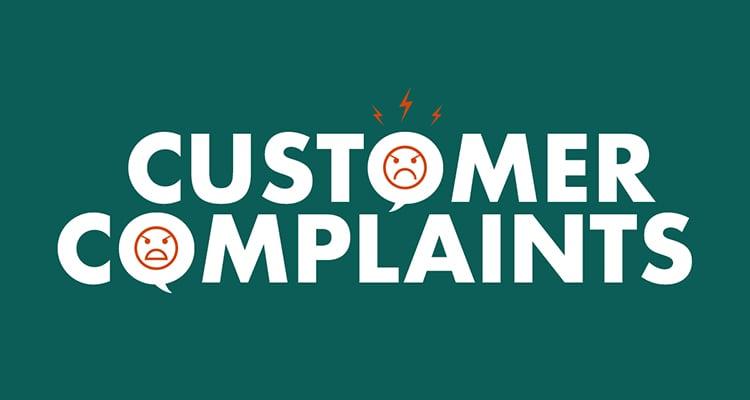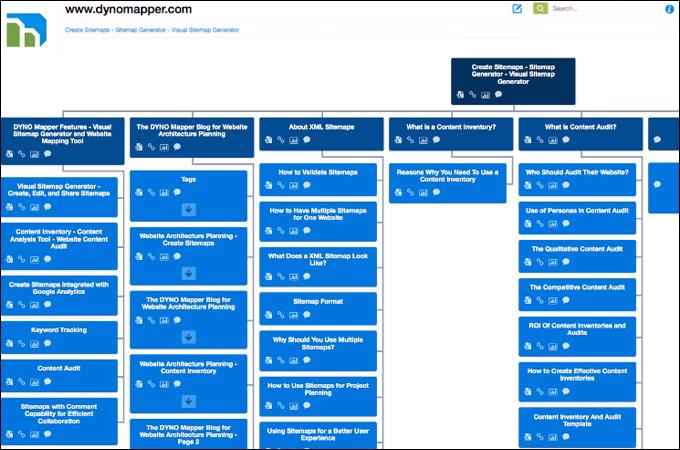Title: Mastering the Art of Response: How to Turn Customer Complaints into Opportunities
In today’s fast-paced business world, every customer interaction can make or break your brand’s reputation. Imagine this: a customer reaches out to voice their dissatisfaction, and instead of dreading the conversation, you see it as a golden opportunity. Sounds ideal, right? In this article, we’re going to explore the essential strategies for responding to customer complaints in a way that not only resolves the issue but also strengthens the relationship.
When handled effectively, complaints can become invaluable feedback that drives improvement and innovation within your business. We’ll dive into practical tips and real-life examples that will empower you to turn even the most challenging situations into win-win outcomes. So, grab your favorite beverage, settle in, and let’s transform the way you think about customer complaints!
Understanding the Importance of Customer Feedback
In today’s competitive market, customer feedback is not just a formality; it is a vital asset for any business aiming to thrive. Listening to what your customers have to say plays a crucial role in shaping your products and services. Feedback serves as a mirror, reflecting the strengths and weaknesses of your offerings. By paying close attention to customer insights, businesses can not only enhance customer satisfaction but also foster loyalty that translates into repeat business.
When customers take the time to voice their complaints, they are providing you with an invaluable opportunity to improve. Complaints can highlight areas where your business may be falling short, allowing you to pinpoint specific issues that need addressing. This proactive approach can help you:
- Identify Trends: Recognize recurring issues that may require systemic changes.
- Enhance Product Quality: Make targeted improvements to products based on direct user feedback.
- Refine Customer Experience: Tailor your services to meet the evolving needs of your clientele.
Moreover, addressing customer complaints effectively can turn a negative experience into a positive one. When customers see that their concerns are taken seriously, it builds trust and shows that you value their opinions. This responsiveness not only helps in retaining customers but also encourages them to share their positive experiences with others. A satisfied customer can become your most effective marketing tool through word-of-mouth recommendations.
| Benefit of Responding to Feedback | Impact |
|---|---|
| Improved Customer Satisfaction | Higher retention rates and loyalty |
| Enhanced Product Development | Better alignment with market needs |
| Stronger Brand Reputation | Increased trust and credibility |
Ultimately, embracing customer feedback is not just about solving problems; it’s about fostering a culture of continuous improvement. By creating an open dialogue with your customers, you demonstrate that their voices matter. This engagement can lead to innovative ideas and solutions that may not have been considered otherwise. Incorporating feedback into your business strategy can significantly elevate your brand’s value and customer engagement levels, setting you apart from the competition.

Empathizing with the Customer Experience
In the world of business, understanding your customers is paramount. When they voice their dissatisfaction, it’s not merely about the complaint; it’s an opportunity to connect with them on a deeper level. Responding to customer complaints with empathy transforms a potentially negative situation into a chance for resolution and relationship-building. It’s essential to listen actively and acknowledge their feelings, showing that you genuinely care about their experience.
Here are some effective strategies to enhance your empathetic response:
- Listen Actively: Ensure that you give your full attention to the customer’s concern. Let them express their thoughts without interruption, signaling that you value their perspective.
- Acknowledge Their Feelings: Validate their emotions by recognizing their frustration or disappointment. A simple statement like, “I understand why you’re upset,” can go a long way.
- Ask Open-Ended Questions: Encourage them to share more about their experience. Questions like, “Can you tell me more about what happened?” can provide valuable insights.
- Personalize Your Response: Use their name and refer to specific details of their complaint. This shows that you’re not just reading from a script, but that you are engaged in their individual situation.
- Follow Up: After resolving the issue, check in with the customer to ensure they are satisfied with the outcome. This demonstrates your commitment to their satisfaction.
To illustrate the impact of empathetic responses, consider the following table that compares customer reactions based on response styles:
| Response Style | Customer Reaction |
|---|---|
| Empathetic Response | Feeling understood and valued, often leading to loyalty. |
| Generic Response | Frustration or indifference, often resulting in negative reviews. |
| Aggressive Response | Escalation of conflict, leading to loss of business. |
When you prioritize empathy in your responses, you not only solve the immediate issue but also create a relationship built on trust. Customers are more likely to return when they feel heard and respected. In a competitive market, this differentiation can set your business apart, making customer experience a core component of your brand identity.
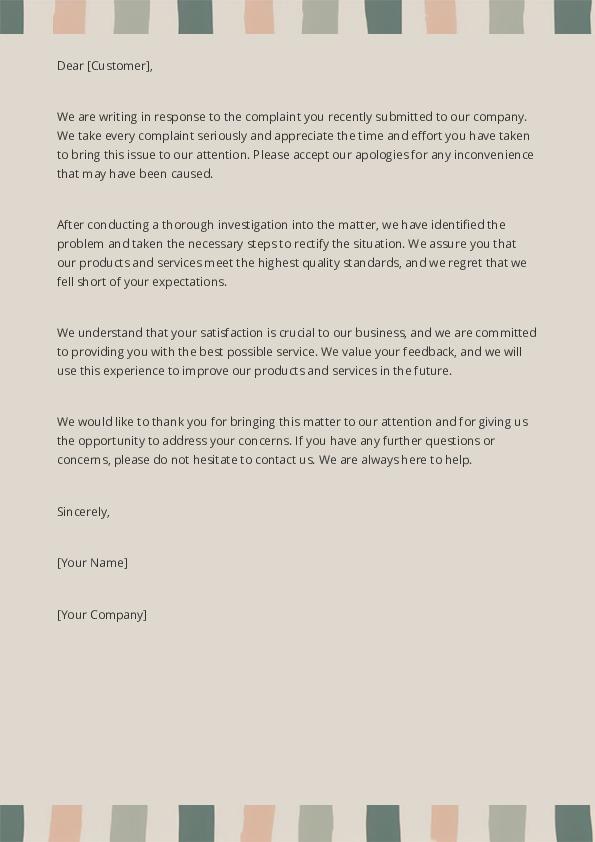
Crafting a Thoughtful Response to Complaints
When addressing customer complaints, it’s essential to approach the situation with empathy and understanding. Begin your response by acknowledging the issue at hand. This shows the customer that you value their feedback and are taking their concerns seriously. Here are some key points to consider:
- Listen Actively: Ensure that you fully comprehend the customer’s complaint before responding. This helps in crafting a well-informed reply.
- Show Empathy: Use phrases like “I understand how frustrating this must be for you.” This builds rapport and conveys that you care.
- Thank the Customer: Regardless of the nature of the complaint, expressing gratitude for their feedback can soften the situation. It shows you appreciate their input.
After acknowledging the complaint, it’s crucial to provide a clear and concise response. Avoid jargon and keep your language straightforward. The goal is to clarify what went wrong and how you plan to rectify the situation. Consider using a structure like this:
| Issue | Solution |
|---|---|
| Delayed Shipment | We are expediting your order and waiving the shipping fee. |
| Product Defect | We will replace the item at no extra cost. |
| Poor Customer Service | We are providing additional training to our staff to improve. |
Offering a solution that addresses the customer’s specific problem can turn a negative experience into a positive one. Make sure to give the customer options whenever possible. This empowers them and makes them feel valued. For instance, you might say:
- Refund or Exchange: “Would you prefer a full refund or an exchange for another product?”
- Discount on Future Purchase: “As an apology, we’d like to offer you a 20% discount on your next order.”
invite further communication. Let the customer know that you are available for any additional questions or concerns. This openness fosters trust and can lead to improved customer loyalty. A simple line like, “Feel free to reach out if you need any more assistance!” can go a long way in extending the conversation beyond the initial complaint.

Quick Tips for Acknowledging Customer Concerns
When a customer raises a concern, the way you respond can make all the difference in maintaining their loyalty. Here are some effective strategies to acknowledge their concerns:
- Listen Actively: Give your full attention to the customer. Make them feel heard by nodding and paraphrasing their key points.
- Show Empathy: Acknowledge their feelings. For example, saying “I understand how frustrating this must be for you” can go a long way.
- Respond Promptly: Timeliness matters. A quick acknowledgment, even if you need time to resolve the issue, reassures the customer that their concern is being taken seriously.
- Clarify the Issue: Ask questions to ensure you fully understand the issue. This shows you care about getting it right.
- Thank Them for Their Feedback: Each complaint is an opportunity for growth. Thanking customers for their feedback shows you value their input.
To further enhance your communication, consider employing a structured approach when addressing concerns. The following table outlines key elements to include in your response:
| Element | Description |
|---|---|
| Greeting | Start with a warm greeting to set a positive tone. |
| Summary of Their Concern | Restate the issue to confirm understanding. |
| Action Steps | Outline how you plan to address the problem. |
| Follow-Up | Let them know when they can expect an update. |
remember to maintain a positive tone throughout your interaction. Your words can either soothe a frustrated customer or escalate the situation. Keep your language respectful and professional, and strive for a collaborative tone that invites dialogue. This approach not only helps in resolving the immediate issue but also strengthens the overall relationship with the customer.

Turning Complaints into Opportunities for Improvement
Every complaint is a golden opportunity in disguise. When customers voice their concerns, they are not merely expressing dissatisfaction; they are providing valuable feedback that can shape your business’s future. By embracing these moments, you can transform negative experiences into platforms for growth and innovation.
To effectively turn complaints into opportunities, consider the following approaches:
- Listen Actively: Take the time to hear what your customers are saying. This means not just hearing their words, but also understanding their emotions and frustrations. Active listening can provide insights that lead to substantial improvements.
- Respond Promptly: A quick response shows that you value customer feedback and are committed to resolving their issues. Timeliness can turn a disgruntled customer into a loyal ambassador for your brand.
- Analyze Patterns: Look for recurring issues in customer complaints. Patterns can highlight systemic problems within your services or products that need addressing. Use this data to make informed changes.
- Engage Customers in Solutions: Involve your customers in the improvement process. Ask for their suggestions on how things can be better. This not only empowers them but also fosters a sense of community and loyalty.
- Follow Up: After resolving a complaint, consider following up with the customer to ensure their satisfaction. This step can reinforce the message that their feedback is valued and that your brand is dedicated to continuous improvement.
Here’s a simple table summarizing several strategies for converting complaints into constructive feedback:
| Strategy | Benefits |
|---|---|
| Active Listening | Builds trust and understanding. |
| Prompt Responses | Enhances customer satisfaction and retention. |
| Analyze Patterns | Identifies areas for improvement. |
| Engagement in Solutions | Strengthens customer relationships. |
| Follow Up | Reinforces commitment to customer service. |
By adopting these strategies, you not only resolve customer complaints but also cultivate a culture of improvement within your organization. Embracing feedback can lead to enhanced products, better services, and ultimately, a stronger brand reputation. Remember, each complaint is not just a problem; it’s an opportunity waiting to be seized.
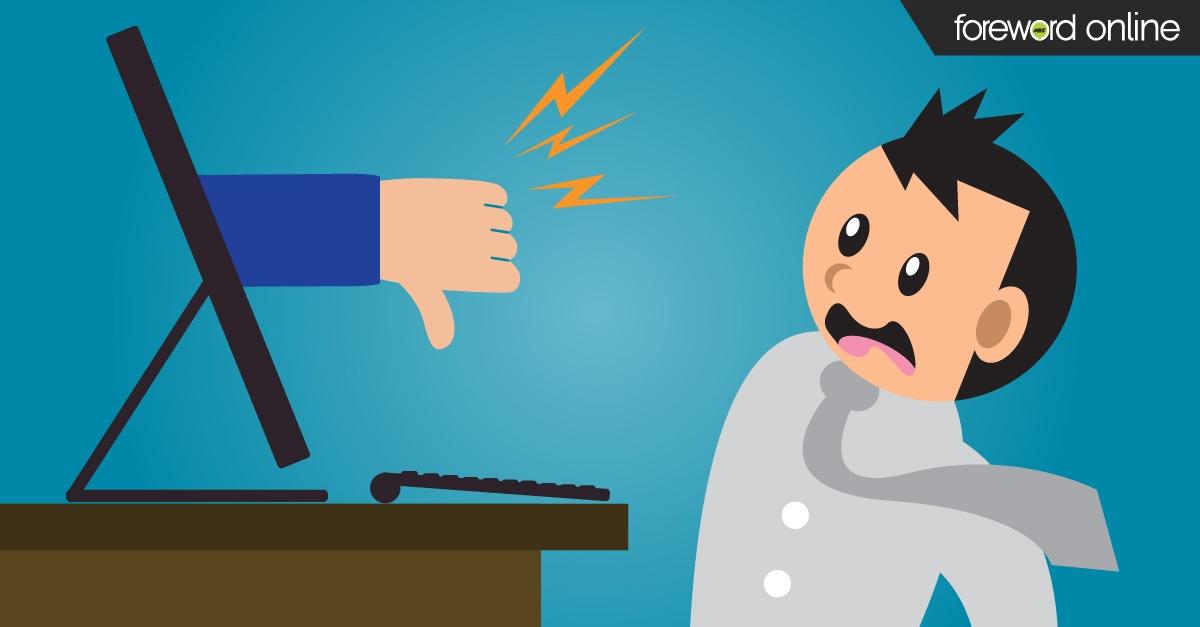
Following Up: Keeping the Conversation Going
Once you’ve addressed a customer’s complaint, it’s important to keep the momentum going. Following up not only shows that you care, but it also reinforces your commitment to customer satisfaction. Here’s how you can effectively maintain the conversation:
- Send a Personalized Message: A quick email or message thanking the customer for their feedback can make a world of difference. Personalize it by mentioning their name and any specifics about their complaint.
- Ask for Their Input: Encourage the customer to share their thoughts on how the resolution worked for them. Questions like, “Did our solution meet your expectations?” can help gauge their satisfaction.
- Offer Additional Support: Let them know that you’re there for any further questions or concerns. This not only opens the door for more dialogue but can also prevent future issues.
Consider creating a structured follow-up plan to ensure no customer feels neglected. A simple table can help organize your follow-up efforts:
| Action | Timing | Method |
|---|---|---|
| Initial Follow-Up | 1-2 days after resolution | |
| Second Check-In | 1 week later | Phone Call |
| Feedback Request | 1 month later | Survey |
Don’t underestimate the power of showing appreciation. A simple gesture, such as a discount or a thank-you note, can transform a disgruntled customer into a loyal advocate. Remember, making an effort to follow up can turn a negative experience into a positive one, fostering long-term relationships.
keep track of the feedback you receive during these follow-ups. This can provide invaluable insights into your product or service and help refine your customer service processes. By continuously engaging with your customers, you demonstrate that their opinions matter, paving the way for a more loyal customer base.
Training Your Team to Handle Complaints Effectively
Equipping your team with the right tools and techniques to handle customer complaints can transform negative experiences into opportunities for growth. Training should focus on fostering empathy, active listening, and effective communication skills. Here are some key strategies to consider:
- Empathy Training: Encourage your team to put themselves in the customers’ shoes. Understanding the emotional impact of a complaint helps in responding more compassionately.
- Active Listening Exercises: Conduct role-playing scenarios where team members practice listening without interrupting. This fosters a culture of understanding and respect.
- Problem-Solving Workshops: Teach your team how to identify the root cause of complaints and explore solutions collaboratively with the customer.
Incorporating real-life examples into training sessions can significantly enhance learning. Use a table to illustrate various customer complaint scenarios along with effective response strategies:
| Complaint Scenario | Response Strategy |
|---|---|
| Product not delivered on time | Apologize and provide a shipping update with a discount on the next purchase. |
| Wrong item received | Offer a quick exchange process and reassure the customer about the resolution timeline. |
| Poor service experience | Listen to their feedback, apologize sincerely, and share how you will improve in the future. |
Furthermore, instilling a sense of ownership in your team can empower them to take complaints more seriously. Encourage them to follow up with customers after resolving an issue. This not only shows dedication but also reinforces the importance of customer relationships.
make training an ongoing process. Regular feedback sessions where team members can share experiences and learn from one another can keep skills sharp. Celebrate successes to maintain motivation and remind everyone of the positive impact of handling complaints effectively.
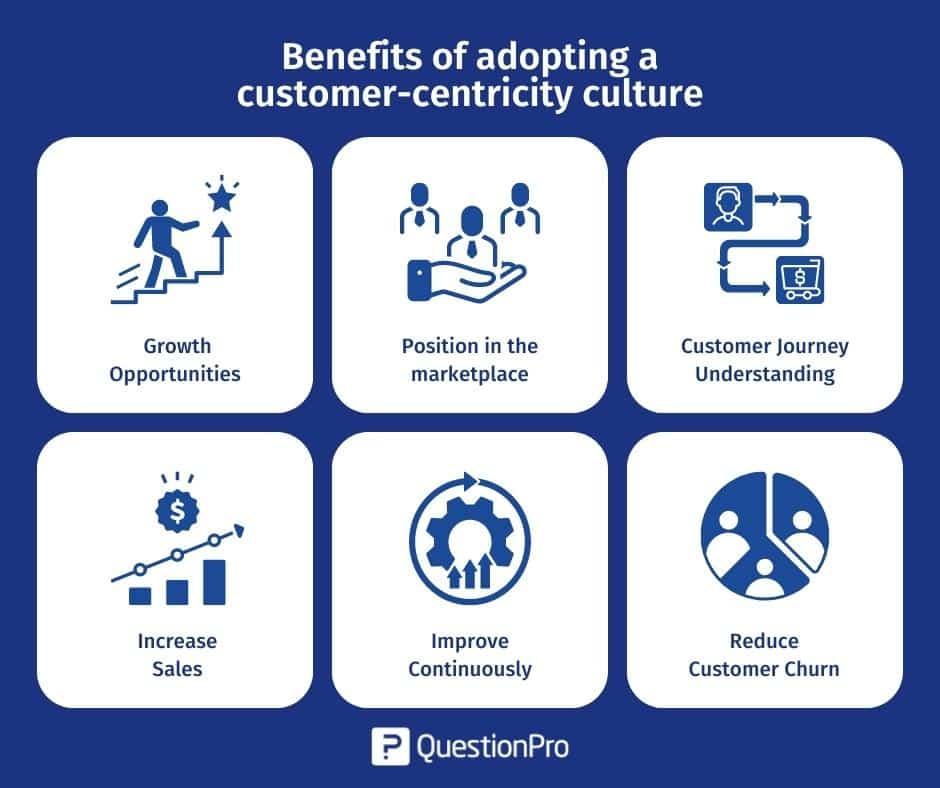
Creating a Customer-Centric Culture
Embracing a customer-centric culture means putting your customers at the heart of everything you do. When a complaint arises, it’s not just a challenge; it’s an opportunity to reinforce your dedication to their needs. Responding effectively can turn a negative experience into a positive one, and here’s how you can achieve that.
Listen Actively: The first step in addressing complaints is to listen. Show genuine interest in the customer’s issue by allowing them to express their feelings and concerns without interruption. This simple act demonstrates that you care and are willing to understand their perspective. Here are a few key points to remember:
- Maintain eye contact and use affirming gestures.
- Summarize their concerns to show you’ve understood.
- Avoid becoming defensive; focus on the issue at hand.
Respond with Empathy: After you’ve listened, respond with empathy. Acknowledge their frustration and validate their feelings. Phrases like “I understand why you feel this way” or “I can see how this situation is upsetting” can help bridge the gap between your company and the customer. This emotional connection can pave the way for a more productive conversation.
Offer Solutions: Once you’ve grasped the issue, provide practical solutions. Customers appreciate when a business takes proactive steps to resolve a problem. Be clear about the options available and include the following:
| Issue | Possible Solutions |
|---|---|
| Delayed delivery | Offer a discount on their next purchase. |
| Product malfunction | Provide a replacement or refund. |
| Unsatisfactory service | Arrange a follow-up call to ensure satisfaction. |
Follow Up: Once a solution is reached, don’t let the conversation end there. A follow-up can make a significant difference in customer satisfaction. Send a personalized message or make a call to ensure that the customer is happy with the resolution. This not only reinforces your commitment but also provides invaluable feedback for continuous improvement.
Creating a culture that prioritizes customer satisfaction is a journey that requires dedication and effort. By listening actively, responding with empathy, providing solutions, and following up, you will not only resolve complaints but also foster loyalty and trust among your customers.
Evaluating and Analyzing Complaint Trends
To effectively respond to customer complaints, it’s crucial to first evaluate and analyze the trends in those complaints. By identifying patterns, businesses can gain insights into recurring issues and improve overall customer satisfaction. Start by categorizing complaints into relevant groups, such as product quality, customer service, or delivery issues. This classification will help streamline your response strategy.
Key steps to evaluate complaint trends:
- Collect Data: Gather complaints from various channels, including social media, emails, and direct feedback.
- Identify Patterns: Look for common themes or frequently mentioned issues within the complaints.
- Analyze Causes: Investigate underlying reasons for recurring complaints to address the root causes.
- Set Benchmarks: Compare current complaint trends against historical data to measure improvements or declines.
Utilizing data analytics tools can enhance your ability to assess these trends effectively. These tools can help visualize complaint data, making it easier to spot fluctuations and identify significant issues that require immediate attention. For instance, a simple table can depict the volume of complaints over time, highlighting peaks that may correlate with specific events or changes in the business.
| Month | Complaint Volume | Top Complaint Category |
|---|---|---|
| January | 150 | Product Quality |
| February | 200 | Customer Service |
| March | 180 | Delivery Issues |
| April | 220 | Product Quality |
Once you’ve analyzed the data, prioritize the most common complaints and devise actionable solutions. Not only does this improve customer satisfaction, but it also fosters loyalty. Customers appreciate when businesses take their feedback seriously and make tangible changes. Communicate these changes back to your customers, letting them know you value their input and are committed to enhancing their experience.
a proactive approach to analyzing complaint trends is vital for any business aiming to improve its customer relations. By regularly reviewing complaint data and responding strategically, you create a cycle of continuous improvement that benefits both your customers and your organization.
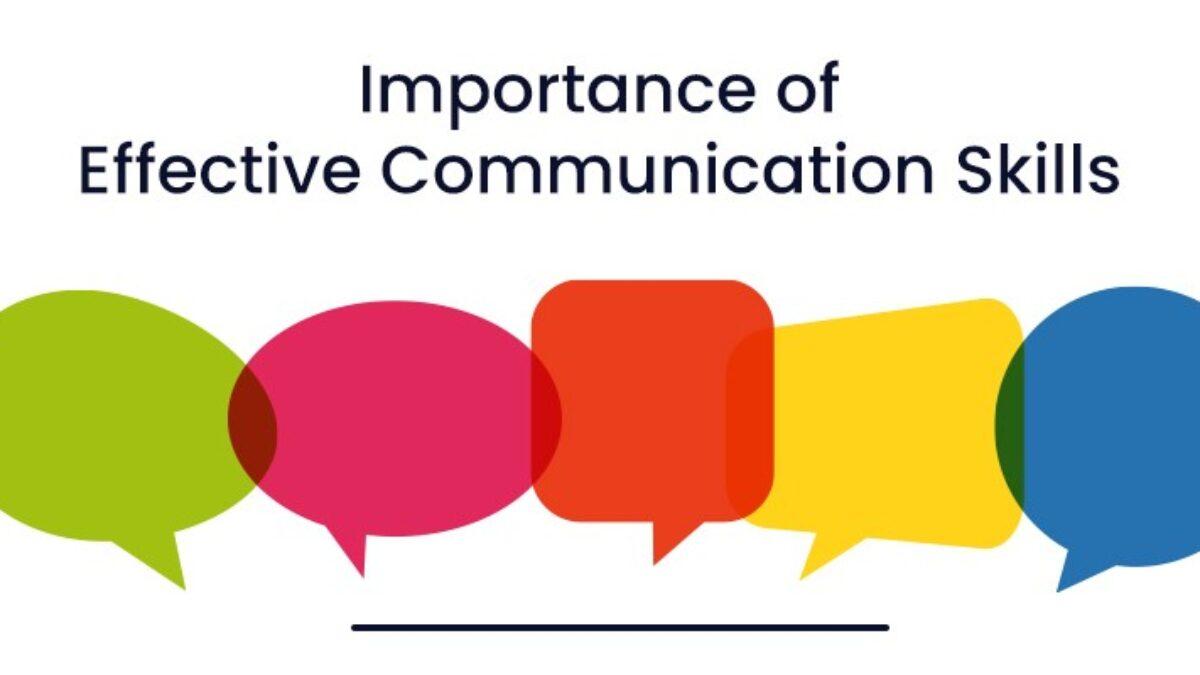
Building Lasting Relationships through Effective Communication
When customers express their dissatisfaction, it’s a golden opportunity to showcase your commitment to their experience. A well-crafted response can turn a negative encounter into a positive one, emphasizing your dedication to customer care. Here are some essential strategies to consider:
- Listen Actively: Make sure to give the customer your full attention. Show that you value their input by acknowledging their feelings and concerns.
- Empathize: Put yourself in their shoes. Use phrases like “I understand how you feel” or “That must have been frustrating” to validate their emotions.
- Apologize Sincerely: A heartfelt apology goes a long way. Even if the complaint seems trivial, expressing regret for their experience can mend bridges.
Next, it’s crucial to provide a solution. Customers appreciate when you take action to rectify the situation. This not only helps resolve the issue but also demonstrates that you care about their satisfaction. Here’s how you can approach it:
| Situation | Response Strategy |
|---|---|
| Product Defect | Offer a replacement or refund. |
| Service Delay | Apologize and provide a discount on the next service. |
| Unmet Expectations | Ask for specific feedback and offer a solution tailored to their needs. |
Furthermore, following up after resolving the complaint is vital. A simple message or call can reinforce the relationship and show that you genuinely care about their experience. Consider sending a follow-up email with a small token of appreciation, like a discount on their next purchase, as a gesture of goodwill.
In all interactions, maintain a positive tone. Your words have the power to influence customer perceptions significantly. By approaching complaints with an open mind and a readiness to resolve issues, you lay the foundation for a loyal customer base that feels valued and understood.
Frequently Asked Questions (FAQ)
Q&A: How To Respond To Customer Complaints
Q: Why is it important to address customer complaints promptly?
A: Addressing complaints promptly shows customers that you value their feedback and their time. It demonstrates that you care about their experience with your business. Quick responses can turn a negative situation into a positive one, potentially converting a dissatisfied customer into a loyal advocate for your brand.
Q: What’s the first step I should take when receiving a complaint?
A: The first step is to listen carefully. Allow the customer to express their concerns fully without interruption. This not only helps you understand the issue better but also makes the customer feel heard and valued. Empathy goes a long way in repairing relationships!
Q: How should I respond if I believe the customer is wrong?
A: Even if you think the customer is mistaken, it’s essential to remain calm and professional. Acknowledge their feelings and express your willingness to help. You can gently provide your perspective, but avoid being defensive. Remember, it’s not about winning an argument; it’s about finding a solution that satisfies the customer.
Q: What’s the best way to phrase an apology?
A: A sincere apology can make all the difference. Use phrases like, “I’m sorry to hear you had this experience,” or “I apologize for any inconvenience we may have caused.” Make sure your apology is genuine and specific to the issue at hand. This shows the customer that you’re taking their complaint seriously.
Q: Should I offer compensation for the complaint?
A: Offering compensation can be a helpful way to demonstrate your commitment to customer satisfaction, but it’s not always necessary. Assess the situation first. If the complaint is severe or if the customer is particularly upset, a small gesture, like a discount or a freebie, can go a long way. Just ensure that any compensation is reasonable and appropriate.
Q: How can I turn a complaint into an opportunity?
A: Every complaint is a chance to learn and improve! Use customer feedback to identify trends and areas for improvement within your business. This proactive approach not only enhances your products or services but also shows your customers that you’re committed to evolving based on their input.
Q: What if the complaint is made public, like on social media?
A: Responding to public complaints requires a careful and thoughtful approach. Acknowledge the complaint publicly to show that you’re listening, then take the conversation to a private message to resolve the issue. This demonstrates your willingness to address the problem while keeping the details confidential, fostering trust with both the complainant and your wider audience.
Q: How can I prevent complaints from happening in the first place?
A: Prevention starts with good communication and setting clear expectations. Make sure your product descriptions are accurate, provide excellent customer service, and be transparent about any potential issues (like shipping delays). Regularly solicit feedback from customers to identify potential pain points before they escalate into complaints.
Q: What should I do if I can’t resolve the complaint to the customer’s satisfaction?
A: Sometimes, you may not be able to fully satisfy a customer’s demands. In such cases, it’s crucial to explain the reasons clearly and empathetically. Let them know that you appreciate their feedback and that you’re committed to ongoing improvements based on customer input. Sometimes, just knowing that their voice has been heard can be enough to placate a dissatisfied customer.
Q: How can I train my team to handle complaints effectively?
A: Training is key! Provide your team with resources and scenarios to practice. Role-playing different complaint situations can build confidence and equip them with the skills needed to handle complaints gracefully. Encourage them to personalize their responses and always prioritize empathy and understanding.
By adopting these strategies, you can transform customer complaints into opportunities for growth, ultimately leading to a more satisfied customer base and a thriving business. Remember, it’s not just about resolving issues; it’s about building trust and loyalty!
Wrapping Up
handling customer complaints doesn’t have to be a daunting task. In fact, when approached with the right mindset and tools, these moments can transform into valuable opportunities for growth and connection. Remember, every complaint is a chance to show your customers that you truly care about their experience and are committed to providing the best service possible.
By actively listening, empathizing, and responding thoughtfully, you not only resolve issues but also build trust and loyalty. So, the next time a complaint lands in your inbox or comes through on a phone call, take a deep breath and embrace it with open arms.
Your customers are sharing their concerns because they believe in your brand and want to see it thrive. Make sure they feel heard and valued, and you’ll soon turn those frowns into smiles. After all, a satisfied customer is not just a one-time transaction—they can become your most passionate advocates.
Now that you have the tools and insights to navigate these challenging conversations, go ahead and put them into practice. Your business—and your customers—will thank you for it!

